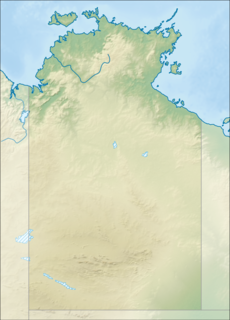See also
| This disambiguation page lists articles associated with the title Alawa. If an internal link led you here, you may wish to change the link to point directly to the intended article. |
Alawa may refer to:
| This disambiguation page lists articles associated with the title Alawa. If an internal link led you here, you may wish to change the link to point directly to the intended article. |

Tanzania, officially the United Republic of Tanzania, is a country in East Africa within the African Great Lakes region. It borders Uganda to the north; Kenya to the northeast; Comoro Islands and the Indian Ocean to the east; Mozambique and Malawi to the south; Zambia to the southwest; and Rwanda, Burundi, and the Democratic Republic of the Congo to the west. Mount Kilimanjaro, Africa's highest mountain, is in northeastern Tanzania.

Following Tanganyika's independence (1961) and unification with Zanzibar (1964), leading to the formation of the state of Tanzania, President Julius Nyerere emphasised a need to construct a national identity for the citizens of the new country. To achieve this, Nyerere provided what is regarded as one of the most successful cases of ethnic repression and identity transformation in Africa. With over 130 languages spoken within its territory, Tanzania is one of the most ethnically diverse countries in Africa. Despite this obstacle, ethnic divisions remained rare in Tanzania when compared to the rest of the continent.
The Alawa people are an Indigenous Australian people from Arnhem Land in the Northern Territory, Australia. The suburb of Alawa in the Darwin's north, is named in their honour.

Alawa is a northern suburb of the city of Darwin, Northern Territory, Australia. It is bounded by Trower and Dripstone Roads, Lakeside Drive and the Rapid Creek. It is in the local government area of City of Darwin.

Santalum lanceolatum is an Australian tree of the family Santalaceae. It is commonly known as desert quandong, northern sandalwood, sandalwood, or true sandalwood and in some areas as burdardu. The mature height of this plant is variable, from 1 to 7 m. The flowers are green, white, and cream, appearing between January and October. The species has a distribution throughout central Australia, becoming scattered or unusual in more southern regions.
Around seven Tanzanian sign languages were developed independently among deaf students in separate Tanzanian schools for the deaf starting in 1963, though use of several are forbidden by their schools. In 1984, a standardized Tanzanian Sign Language was proposed by the Tanzania Association for the Deaf, using common or similar signs where these exist in the schools which allowed research, but it has not been officially implemented, and there remains little influence between the languages. A dictionary has been produced. Lexically, the variety that developed in the oralist deaf school in Tabora is significantly different from the dictionary, and is under investigation.
Marra is an Australian Aboriginal language, traditionally spoken on an area of the Gulf of Carpentaria coast in the Northern Territory around the Roper, Towns and Limmen Bight Rivers. Marra is now an endangered language. The most recent survey was in 1991; at that time, there were only 15 speakers, all elderly. Most Marra people now speak Kriol as their main language. The remaining elderly Marra speakers live in the Aboriginal communities of Ngukurr, Numbulwar, Borroloola and Minyerri.
Warndarang is an extinct Aboriginal Australian language in the Arnhem family, formerly spoken by the Warndarang people in southern Arnhem Land, along the Gulf of Carpentaria. The last speaker was Isaac Joshua, who died in 1974, while working with the linguist Jeffrey Heath.
Mangarrayi is an Australian language spoken in the Northern Territory. Its classification is uncertain. Margaret Sharpe originally sought to record the language but turned to the study of Alawa after the station owner where her informants lived denied her access, having tired of the presence of researchers on the property.
Tanzania is a multilingual country. There are many languages spoken in the country, but no one language is spoken natively by a majority or a large plurality of the population. The Bantu, Swahili language and English, the latter of which was inherited from colonial rule, are widely spoken as lingua francas. They serve as working languages in the country, with Swahili being the official national language. There are more speakers of Swahili than of English in Tanzania.
Alawa (Galawa) is a moribund Indigenous Australian language spoken by the Alawa people of the Northern Territory. In 1991, it had 18 remaining speakers and 4 semi-speakers.

The Arnold River is a river in the north of the Northern Territory of Australia.

The Macro-Gunwinyguan languages, also called Arnhem or Gunwinyguan, are a family of Australian Aboriginal languages spoken across eastern Arnhem Land in northern Australia. Their relationship has been demonstrated through shared morphology in their verbal inflections.
I, the Aboriginal is an Australian book and television film about the life of Aboriginal Australian Phillip Roberts.
The Warndarang (waɳʈaraŋ) were a predominantly coastal Aboriginal Australian people of eastern Northern Territory. Though extinct as a distinct ethnolinguistic group, their descendants survive among the neighbouring Nunggubuyu.
The Ngalakgan are an indigenous Australian people of the Northern Territory.
The Yukul, also written Jukul, were an indigenous Australian people of the Northern Territory.
The Mangarayi, also written Mangarai, were an indigenous Australian people of the Northern Territory.
The Marra are an indigenous Australian people of the Northern Territory.
Margaret Clare Sharpe is a linguist of Australian Aboriginal languages, specializing in Yugambeh-Bundjalung languages, with particular regard to Yugambir, She has also done important salvage fieldwork on the Northern Territory Alawa language.